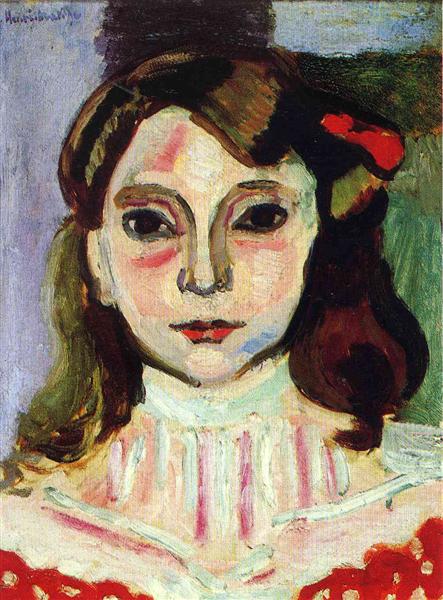Description
In the work "Marguerite" from 1906, Henri Matisse offers us a delicate and profound portrait of his daughter, Marguerite Matisse. This painting, which measures 45x60 cm, is a brilliant representation of the artist's personal style during a period of notable transition and experimentation in his career.
Matisse, recognized as one of the greatest exponents of Fauvism, hints at several aspects in this work that would be characteristic of his mature style. However, what is clearly notable in "Marguerite" is the subtlety and restraint in the use of color, in contrast to the typical chromatic explosion of his better-known Fauvist works.
In the composition, Marguerite is presented in a state of calm contemplation. Her figure occupies almost the entire space, centered and looking slightly to the side, suggesting a natural and spontaneous pose. The background is suggested in a simplified manner, allowing the focus to remain on the serene and careful details of Marguerite's face. Her dress, depicted with loose and economical strokes, conveys a simple elegance appropriate for the time.
The use of color in "Marguerite" is particularly interesting. Matisse opts for a more muted palette, using soft tones of pink, ochre, and blue to build the atmosphere of the portrait. Marguerite's face is outlined with confident strokes, meticulously segmented with areas of light and shadow that provide an almost sculptural depth. The softness in the application of color reveals a more descriptive technique than in his bolder works, suggesting the personal importance of this subject to the artist.
In terms of technique, Matisse employs a free but controlled brushstroke, achieving a texture that brings the figure to life without losing the clarity of the portrait. Marguerite's eyes, perhaps the most captivating aspect of the work, are filled with a melancholy and introspection that resonate with universal human emotions.
Although "Marguerite" reflects a more traditional and emotionally restrained approach by Matisse, its relevance within the canons of modern art cannot be overlooked. The work is situated within a personal and artistic historical context where Matisse was exploring the limits of figurative representation, seeking a balance between reality and abstraction. In this sense, "Marguerite" can be considered a crucial piece that showcases this stylistic evolution.
Matisse's relationship with his family members, especially his daughter Marguerite, was always deep and significant, which is reflected in his multiple portraits. Every brushstroke in this work suggests a loving contemplation and paternal devotion, qualities that transcend the merely pictorial and invite us to know the man behind the canvas.
In summary, "Marguerite" from 1906 is a testament to Henri Matisse's ability to capture the essence of his subjects with an economy of means that does not sacrifice emotional intensity. It is a work that, although less known than some of his more vibrant and revolutionary creations, offers an intimate window into the affection and technical mastery of the artist, consolidating him as one of the most influential figures in 20th-century art.

